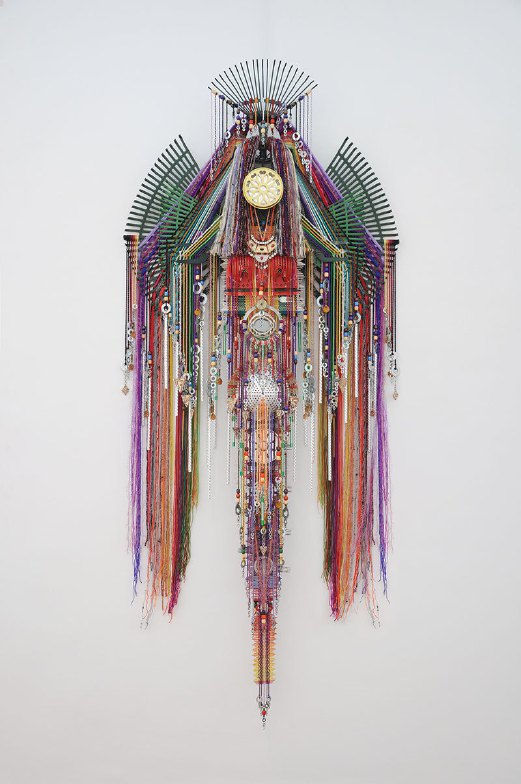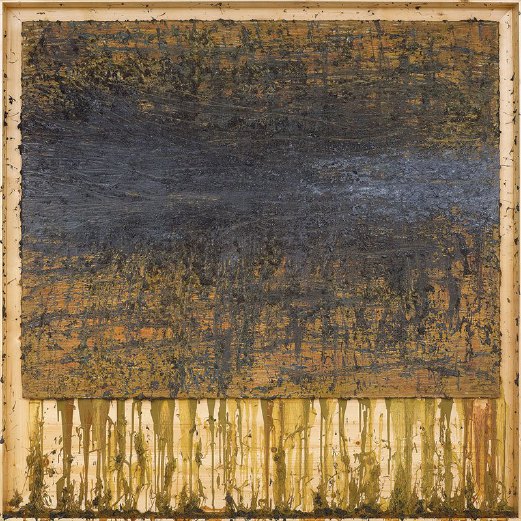Art Stage Singapore welcomes its seventh edition with works that are bolder, and kookier, and reminds us that beauty must never be forgotten amidst our battles, writes Sarah NH Vogeler
AH art fairs. It’s about sell, sell, sell. But it’s also about other things, like forming a discourse and the exchange of thoughts. They can be riotous fun, deeply engaging and the city, where it’s held becomes one huge exhibition as well.
Art Stage Singapore, an anchor event of the Singapore Art Fair, held recently at the Marina Bay Sands Expo & Convention Centre, was bigger than ever, with 131 exhibitors from 227 countries and 54 cities.
Lorenzo Rudolf, its founder and president remarked: “We now exist in radically changing times. Everything is in crisis; the world economy, politics and society, all of which affect the art market. Selling art based only on prices has become obsolete; it can no longer be viewed as merchandise or commodity. Art is a piece of culture and all involved in the art industry will have to reflect on what this really means — we must break new frontiers. For Art Stage Singapore, this simply means we have to focus intently on content and to present art in context.”
Here are our country’s participants this year:
RICHARD KOH FINE ART
It dazzles with its group of artists: Anne Samat, Faizal Yunus, Hasanul Isyraf Idris, Haffendi Anuar, Hings Lim, Liew Kwai-Fei, Liu Hsin-Ying, Melissa Tan and Yeoh Choo Kuan in a delightful synthesis, including wall-mounted mix media works, free standing sculptures, prints, drawings and paintings. The objective? To reveal the forceful and artistic dynamisms seen through progressive printmaking techniques, transitory natures and intellections in paintings.
“We’ve become a permanent fixture at Art Stage and have supported them from the beginning,” said Koh, of his gallery’s participation. “There’s a lot of interest in Southeast Asia and there are many talented artists who are still under the radar. And just because their works aren’t bought by the ‘usual collectors’ doesn’t in any way, say anything of their worth. We’ve been getting visits from ‘quiet collectors’ and dealers, who marvel at the quality of works shown. These days, you must be global but local.”
He offered artist Anne Samat’s works as example. “Anne’s works are sold-out and interestingly, sold to huge collectors, who by the way, are non-Malaysians. And yes, although one of the purposes of an art fair is to expose our artists to the global market, there’s still that tug in one’s gut; wanting the major works to stay in the country. We have so much talent but because the buying pool is only interested in certain genres, everything else becomes ‘ganjil’ (strange). We invest in the young and work with them on a long term basis.”
WEI-LING GALLERY
Enter Rajinder Singh’s Wound Bloom — deeply affecting works; the artist perceiving wounds as a failure of language. The wounds shown is language, whispering secrets through hurt seen in torn and cut flesh.
Gallerist Wei-Ling shared: “There are five pieces shown here. This is the artist seeking answers on his mortality. At the end of the day, when we face our Maker, what do we go with, what do we leave behind and take with us? All religions teach good things, for us to be better human beings.”
According to Wei-Ling, in Wound Bloom, Rajinder manipulates these images digitally, of idols and deities that have featured on his consciousness over the years. He was brought up a Hindu and growing up, was exposed to other religions as well. He has deep respect for all of them.
“In this work, you see an amalgamation of different religions coming together. For example, the body of Gabriel with the Goddess of Mercy’s head. Or Garuda on the head of David. This work is “creating” deities that can speak to everybody. Rajinder is deeply introspective and his works are very close to his heart.”
Then there was Ivan Lam’s vending machine, a project which began in 2013 and was first exhibited at Art Basel Hong Kong. “Lam ‘smuggled’ Malaysian artists in the show; he did a kind of shout-out to artists, asking them to submit their calling-cards and the works are the size of name cards. He received 38 submissions and he showed them all in Hong Kong. For this art fair, he extended his invitation to artists in Southeast Asia. And now he has 56.”
The idea behind it is the commodification of art within the context of a fair. The vending machine is a parody of any art fair; you see something you want, put the money in and collect your purchase.
Added Wei-Ling: “And speaking of art fairs, Art Stage Singapore, from the beginning, has been incredible. We’ve been here six years. The fair has evolved over the years and now has become a lot more focused and the audiences have matured.”
G13 GALLERY
Bayu Utomo Radjikin and Shafiq Noordin got top-billing here. Bayu needs no introduction; his works speak for themselves and his recent solo was unsurprisingly, a definite hit. As for Shafiq, sure, politically-rooted works are nothing new; we’ve seen so much our eyes are in danger of imploding. But this young talent, despite his strong opinions, also discreetly analyses the politics of his own life in ways that are fresh and to an extent, alluring.
According to Kenny Teng, owner of G13 Gallery, he wanted to showcase works done by young artists. Not just those who are gifted but also consistent, disciplined and possess staying power. This outing was the gallery’s fourth year (of participation) at Art Stage Singapore and they do have their own regular collectors.
During their first year, they hardly knew anyone. But it’s a whole different story now.
Teng said: “From an exhibitor’s point of view, I feel the collecting patterns between Malaysia and Singapore are similar in terms of taste. Singapore is an excellent market to penetrate; it has a good knowledge of Malaysia art and is supportive of our works. The main pulling factor is the prices, of course. We’re always on the look-out for new talent from different countries. We carry works from the Philippines, Thailand and Indonesia. Every country has its own strengths and we show these strengths to the best extent that we can.”
SOAK IN BEAUTY
Wandering the mazes and getting blissfully lost, Singapore’s Galerie Sogan & Art stopped me in my tracks. Awang Damit Ahmad’s solo exhibition Garis Mega... A New Journey was on full display, inspired by his travels to Japan, the Gandem Robot displayed prominently in a local mall, in particular. I had no idea what a Gandem was but eventually, received the explanation from Awang Damit’s son Iqbal. The effigy, he enlightened, is “A kind of protector for the young generation. Japanese artist Takashi Murakami said that Japanese teenagers need a new religion. And when my father saw Gandem, he immediately recognised this as a potent symbol.”
In the end, we must never forget beauty no matter how fraught our battles are. And Art Stage Singapore since its inception, despite being on the receiving end of harsh critique, has given us exactly that, a chance to soak in exquisiteness, to immerse ourselves in things which matter. As poet Rabindranath Tagore illuminates in Stray Birds, “Clouds come floating into my life, no longer to carry rain or usher storm, but to add colour to my sunset sky.”
Details at www.artstagesingapore.com.






